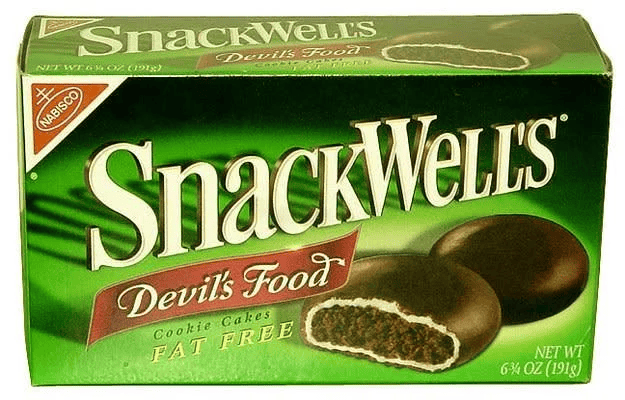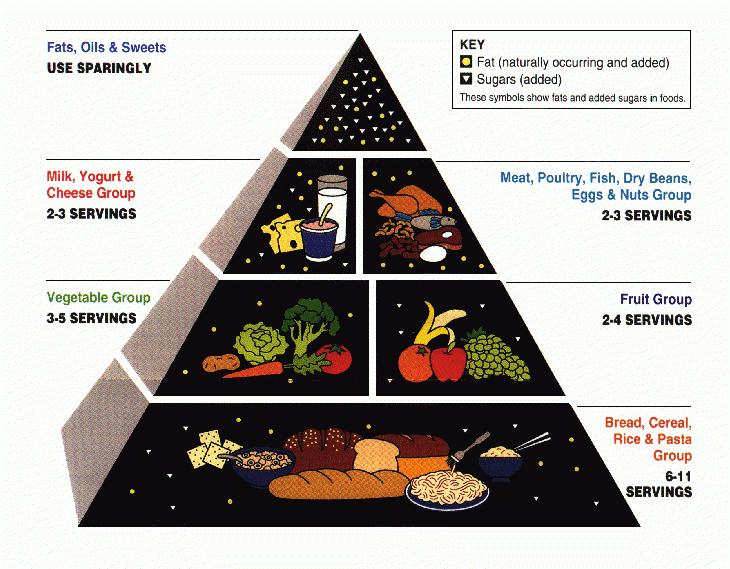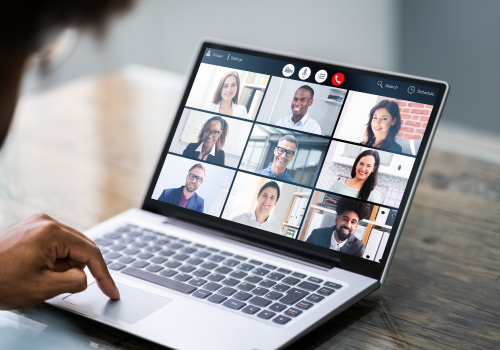7 min read
The rise and fall of SnackWell’s and the 90s’ low fat craze: When business storytelling falls apart in the face of reality
Ed Jaffe Oct 11, 2023 7:01:01 AM

Business storytelling needs to follow a set of rules in order to land with audiences. Sometimes storytellers are given the advice to “never let the truth get in the way of a good story.” That advice might be OK for fiction, movies that are “based on a true story,” or stories we tell at cocktail parties. When it comes to business storytelling, not letting the truth get in the way of a good story (aka lying) can lead to disastrous consequences. The meteoric rise and subsequent fall of SnackWell’s is a cautionary tale of what can happen when a story falls apart in the face of reality.
I’m a 90s kid. Growing up, I loved rollerblading, playing Tetris on a (black and white, and very chunky) Game Boy, and watching Seinfeld and The X-Files when they first aired. And while many of us who grew up in that time period – specifically “Elder Millennials” and “Xennials” – look back on much of 90s culture with nostalgia, there are plenty of things from that time period that were…less than ideal.
No, I’m not talking about baggy jeans, platform sneakers, frosted tips, chain wallets or pogs (seriously, what were we thinking?). I’m talking about the “low fat/no fat” craze from the 90s, which can best be represented by this brand:

Remember SnackWell’s?
Anyone who went grocery shopping in the 90s likely remembers SnackWell’s, a brand that launched in 1992 and was unceremoniously retired in 2022. SnackWell’s whole shtick was that “fat free is healthy, so eat as many of these as you want.” It was so pervasive that there’s a term “The SnackWell Effect,” (not to be confused with the Streisand Effect), which is described on its Wikipedia page as:
Also known as moral license, [The SnackWell Effect] is also described as a term for the way people go overboard once they are given a free pass or the tendency of people to overconsume when eating more of low-fat food due to the belief that it is not fattening.
We now know that much of the “low fat” food from that era was actually quite unhealthy. And, if we look at the actual data, people back then also knew that it was unhealthy. So why did we all believe otherwise? It’s an example of when the story was more powerful than the facts. When we look at headlines and ignore nuance. As Daniel Khaneman, the “godfather of behavioral economics” puts it in Thinking Fast and Slow:
“The confidence that individuals have in their beliefs depends mostly on the quality of the story they can tell about what they see, even if they see little…No one ever made a decision because of a number. They need a story.“
SnackWell’s is a great case in the power of business storytelling. What happens when storytelling makes an impact. And then what happens when that business story turns out to be vaporware.
The business storytelling that made Snackwells
“Low fat means healthy” didn’t come out of nowhere – there were studies going back to the 1940s that ultimately led to the idea. It took off in the late 80s/early 90s for a few reasons, including:
- The food pyramid visual
- Simplifying at the expense of nuance.
- Not letting the truth get in the way of a good story.
The story of the food pyramid
Back in 1992, the United States Department of Agriculture (USDA) published the “food pyramid,” a visual cue intended to guide Americans on how to make healthy food choices. If you grew up in the 90s, you saw this thing everywhere – doctors offices, health class, etc. To the credit of the people who designed it, it was a straightforward visual that didn’t require additional explanation:

As we know now, the food pyramid was well-intentioned but problematic. Allegedly, it was heavily influenced by the meat and dairy lobbying groups, who have been accused of putting their own interests over the science. It also put all fats together, instead of separating “good” (unsaturated) fats from “bad” (saturated) fats. Same thing with carbs – for example, whole grain bread has a very different nutritional profile than white bread.
To the USDA’s credit, they no longer use the food pyramid and have shifted to “MyPlate.” And while MyPlate has its critics, it’s a significant improvement from the food pyramid.
When you’re telling business story, the visual can have a big impact on how the audience interprets your message. Especially in a leave-behind slide, or another situation where you can’t provide context. Make sure that your visuals support the story that you want to tell, otherwise your audience may tell themselves a very different story.
Business storytelling that simplifies at the expense of nuance
Simplifying complex ideas is a tricky issue. One of the biggest challenges for anyone giving a demo or presentation is balancing a high level business story with low level details. This is even more complicated when you’re working in a regulated industry such as finance or life sciences.
SnackWell’s is an example when simplifying business stories goes too far. I would argue that the nuance is the real story. Here are a few examples of where the nuance matters:
- Caloric content: Technically, fat has more than twice the calories per gram (9g) than carbohydrates, including sugar (4g). This would, on its face, support “fat is bad,” but ignores, as radio legend Paul Harvey would say, “the rest of the story.” There are other elements to consider besides caloric content, for example, the rate at which humans digest different types of carbs (whole grains take longer to digest, thus providing energy for a longer amount of time).
- Types of fat: Not all fat is the same. Unsaturated fats, like those found in olive oil, nuts and avocados, do have health benefits. Saturated fats, like those found in donuts or chips, do not. For example, an avocado has 20g of fat. The average donut contains ~15g. I think we all know which one is “healthier.” The low fat message ignores the health benefits of some fats.
- Substitutes: Most (all?) humans want their food to taste good. Fats taste good. When fats are removed, the flavor needs to come from somewhere. SnackWell’s replaced the fat with sugar (or, in the early variations, high fructose corn syrup), making them significantly less healthy than Nabisco wanted you to believe. I couldn’t find the label of an old formulation, but one of the newer formulations of the vanilla creme cookies has 17g of sugar. For comparison, a regular Snickers bar has 20g.
Don’t simplify your story if it changes the details
I can appreciate balancing nuance with simplification when it comes to business storytelling. After all, sometimes a message needs to be simplified in order to land. But ask yourself this: does your simplification dilute or otherwise alter the message?
When in doubt, transparency is best. It’s OK to acknowledge that you’re simplifying, but tell the audience that you’re doing it. Even better if there’s somewhere they can get the full story (a leave behind deck, online documentation, etc). It’s true that business storytelling is about persuasion, but it should never be at the expense of reality.
Not letting the truth get in the way of a good story
I’ve often heard the phrase “never let the truth get in the way of a good story,” usually used somewhat facetiously. Especially in the context of business storytelling. And it’s a bad idea.
Many research papers and academic studies present findings and lead the reader to a conclusion, especially as it’s through the lens of the author(s); however, the conclusion is rarely explicitly stated. Sometimes it’s because there isn’t necessarily a single conclusion and the data is subject to interpretation. And sometimes there is a conclusion, but the study itself puts the conclusion into doubt. A few examples:
- Correlation and causation: In statistics, a correlation only shows a mathematical relationship between two data points. Correlation does not prove which one is the “cause.” For years, tobacco companies fought against the “smoking causes cancer” story (which we know to be true) using this principle. They acknowledged a high correlation between the two, but it could be that people who have lung cancer also smoke. The media often conflates correlation and causation as it makes for a better story, even if it ignores this basic statistical fact.
- Sampling bias: In statistics, “statistical significance” means, within a set margin of error, the sample is big enough that the results should be the same across the population. However, this only looks at the question “was the sample large enough,” not “was the sample diverse enough.” One of the early studies contributing to the low fat narrative was the “Seven Countries Study.” Initiated in the 1950s by researcher Ancel Keys, it suggested a correlation between cholesterol and Coronary Heart Disease (CHD). Critics have argued the study “cherry picked” countries where the data support the hypothesis (United States, The Netherlands, Italy, Japan, Greece, Finland, and Yugoslavia – now Croatia and Serbia), when data were available for more than 20 countries.
- Industry influence: Industry trade groups fund studies. The Sugar Research Foundation (SRF), now known as the Sugar Association, sponsored research minimizing the connection between sugar and heart disease/weight gain. This still happens in modern studies. For example, in 2015 the NY times reported that studies sponsored by soft drink companies and the sugar industry were five times more likely to find no link between sugary drinks and weight gain than studies whose authors reported no financial conflicts.
Business story vs. reality – reality always wins
It can be frustrating when reality doesn’t perfectly match the narrative. For example, researchers have observed that French diets tend to be relatively high in saturated fat, yet instances of Coronary Heart Disease are relatively low – this is called the “French Paradox.” This term was popularized following a 1991 segment on 60 Minutes, long after Keys began his research, however Keys’ critics allege France was intentionally left out of the study as it would undercut the analysis.
If your story runs headfirst into the brick wall called “reality,” perhaps you shouldn’t use it. This is especially important for those working in regulated industries. A friend of mine who works in medical devices once said “we have to go into every meeting and act like we’re in a deposition,” because the consequences of lying (even by omission) or making inflated claims could be quite severe. As in, a lawsuit or fine. And of course, as my friends in cybersecurity sometimes call it, a “resume generating event.”
What’s the story you want to tell?
In sales, storytelling is often the difference between closing a deal or leaving empty handed. A good story is memorable, impactful, and can help the audience understand your message. But as we learned from the low fat craze, when the story is only based on some of the facts, the results can be disastrous. In the 90s, SnackWell’s was so popular their tagline was “Can we ever make enough?” They told a compelling story, and most of us bought into it. Fast forward 30 years, the facts no longer support the story, and the brand no longer exists.
As a storyteller, it’s your job to figure out the best narrative that makes your point. Before telling your story, make sure the facts support your case.
Have you ever wrestled with how to tell complex story? Do you want some advice on a story you’re working on? We’d love to hear about it in the comments!
The Mode Shift: When Executives Change Gears Mid-Meeting
Have you ever walked into a meeting with an executive and thought, "I've got this," only to be completely thrown of course?

FAQ from 2Win! Global
Our elite training programs for presales, sales, and customer success teams elevate and modernize the buyer experience and abbreviate sales...


![The Disturbing B2B Truth and Why You Should Care [VIDEO]](https://www.2winglobal.com/hubfs/Imported_Blog_Media/Rule%20of%2024%20Interview.jpg)